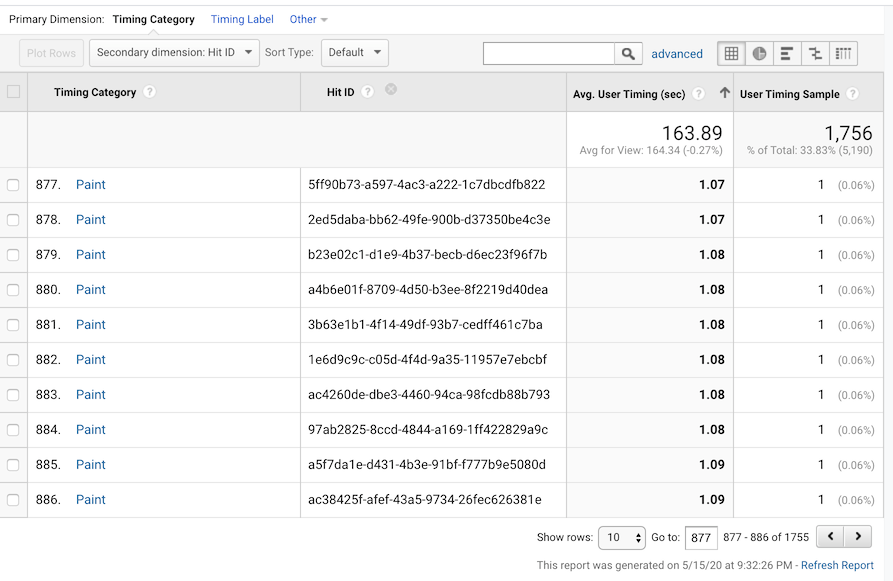Make Best Use Of Coverage Precision With Secondary Dimension in Google Analytics
Understanding how to maximize reporting accuracy with additional dimensions in Google Analytics can dramatically boost the deepness of insights obtained from information evaluation. By integrating second measurements tactically, marketing experts can uncover covert patterns and relationships that might not be immediately evident when assessing primary metrics alone.
Understanding Additional Dimensions in Google Analytics
Additional dimensions enable users to sector and additionally explore data beyond the primary measurement chosen. While the main measurement might present the overall number of web page sights, adding a second measurement such as 'source/medium' can give understandings right into where the web traffic originated from.
Additionally, understanding second measurements is crucial for creating more customized records customized to specific organization objectives. By selecting the best mix of second and key measurements, analysts can discover patterns, patterns, and connections that may otherwise remain surprise. This nuanced technique to data analysis empowers services to make educated decisions based on a detailed understanding of customer actions across various measurements.

Exactly How to Use Second Dimensions
When leveraging additional dimensions in Google Analytics, the useful application involves selecting specific data specifications to more improve understandings past the primary measurement's extent. To apply secondary measurements efficiently, begin by accessing the report or dataset where you wish to delve much deeper right into the information. Bear in mind that additional dimensions help provide context and granularity to your main measurement data, allowing you to extract even more workable and meaningful understandings from your Google Analytics records.
Leveraging Secondary Measurements for Insights
Making use of secondary dimensions in Google Analytics enables for a much more extensive analysis of information, providing valuable insights beyond the key dimension's scope. By leveraging secondary measurements, customers can dig much deeper into the efficiency metrics of their site or application, revealing concealed patterns and fads that might not be immediately apparent when only taking a look at primary measurements.
One trick benefit of making use of secondary dimensions is the ability to section and filter data more precisely. This can assist marketing experts and analysts much better recognize the actions of particular individual sections, such as brand-new visitors versus returning visitors, or traffic originating from different geographical places.
In addition, secondary measurements allow individuals to compare and contrast numerous data points within the same record, supplying a more holistic view of efficiency (Secondary Dimension in Google Analytics). Matching the main dimension of landing pages with second measurements like demographics or tools can disclose which pages are most efficient in engaging users on various tools or from various group teams.
In significance, leveraging second measurements in Google Analytics equips individuals to remove richer insights from their information, bring about more informed decision-making and ultimately, boosted performance.
Ideal Practices for Additional Dimensions
When analyzing data in Google Analytics, integrating secondary measurements properly improves the depth of understandings stemmed from the key metrics. To make the most out of second dimensions, it is crucial to abide by ideal practices that guarantee precise and meaningful coverage. It is essential to select additional dimensions that line up with the main metric you are examining. Choosing appropriate additional measurements helps in providing context and a more clear understanding of the data being checked out.
In addition, it is recommended to limit the number of secondary measurements used in a solitary report to stay clear of frustrating the evaluation with excessive info. Concentrating on a few key additional measurements at a time can bring about more concentrated and actionable understandings. Furthermore, consider exploring with different mixes of secondary and primary measurements to uncover special fads and patterns that may not appear when considering her response the data alone.
Advanced Evaluation Techniques With Additional Measurements
Checking out complex data connections with the tactical application of second measurements can unveil nuanced insights that elevate the deepness of analysis in Google Analytics. By combining secondary measurements with key information sets, sophisticated analysis techniques can be used to extract beneficial info. One such strategy is associate evaluation, where second measurements enable the division of users into groups sharing usual qualities. This method enables a much deeper understanding of individual actions patterns gradually, aiding in the recognition of patterns and the analysis of advertising and marketing campaigns' effectiveness.
Furthermore, additional measurements can boost the analysis of conversion paths by giving added context. Understanding the various touchpoints a user connects with before converting can be essential in maximizing the customer trip - Secondary Dimension in Google Analytics. By making use of additional dimensions to dig into specifics such as traffic resources or devices utilized, marketing experts can tailor techniques to target high-converting networks properly
Verdict

To improve information analysis and gain much deeper understandings into customer actions, understanding secondary dimensions in Google Analytics is imperative - Secondary Dimension in Google Analytics. Secondary dimensions permit users to sector and even more dissect data past the key measurement picked. While the primary measurement may display the overall number of page sights, adding an additional dimension such as 'source/medium' can supply insights right into where the website traffic stemmed from.When leveraging additional dimensions in Google Analytics, the useful application includes picking specific data criteria to additional fine-tune understandings past the main dimension's scope. Remember that second dimensions aid supply context and granularity to your main measurement information, why not try these out allowing you to draw out more actionable and purposeful understandings from your Google Analytics reports
Comments on “The Relevance of Secondary Dimension in Google Analytics for Your search engine optimization”